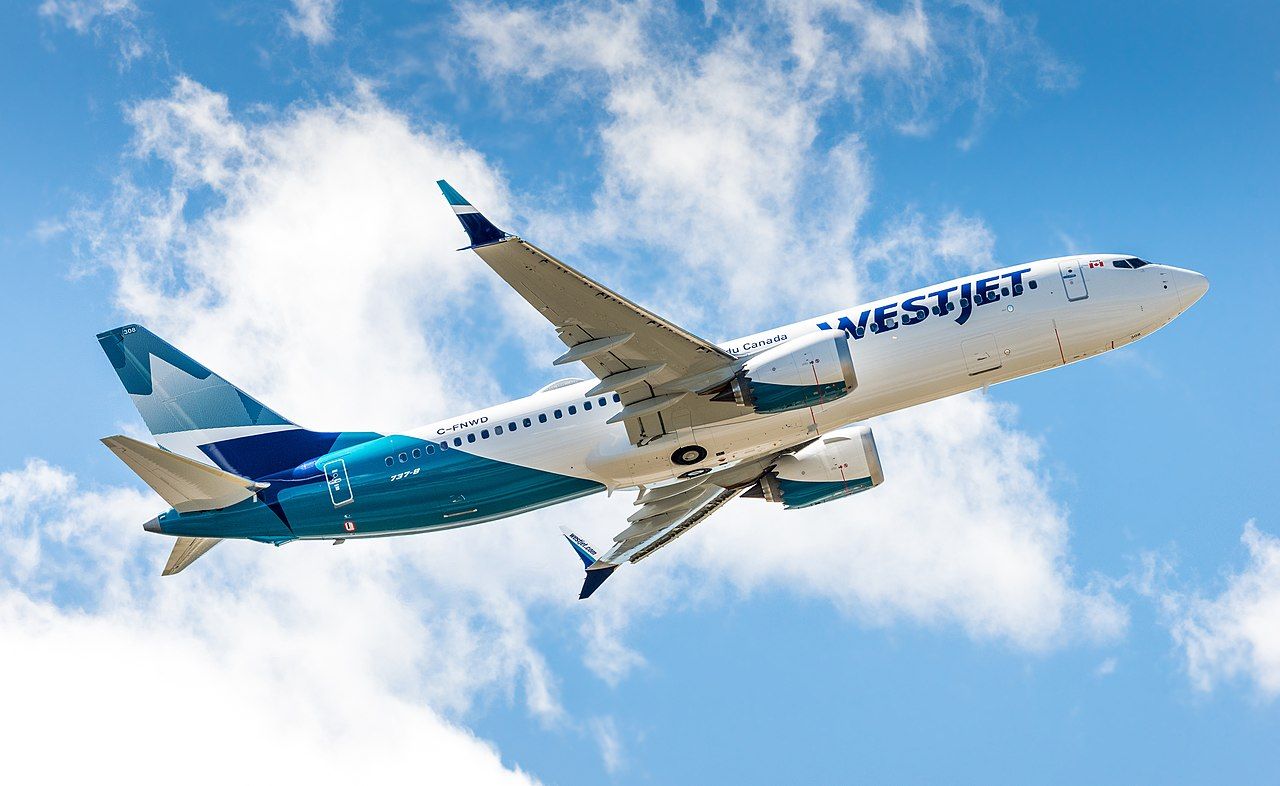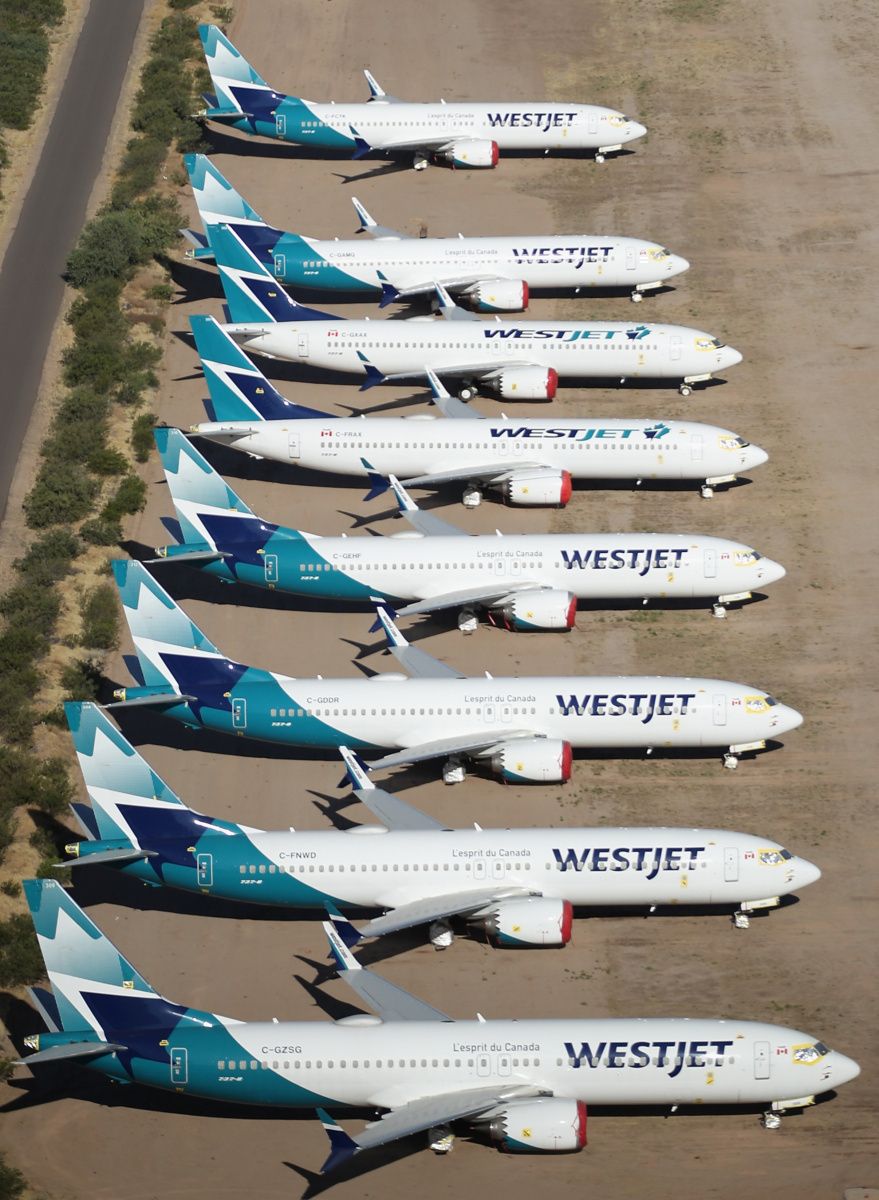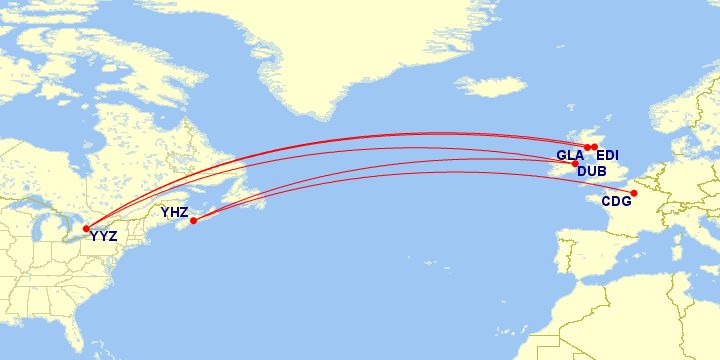WestJet and its Boeing 737s have been quietly operating service 'across the pond' for years. While the airline deploys the long-haul Boeing 787-9 for higher-volume routes such as Toronto, Vancouver, and Calgary to London Gatwick, the 737 MAX 8 is used to connect smaller cities to big cities, or smaller cities to other small cities. Let's take a look at which of WestJet's transatlantic services utilize the narrowbody.
Where are the aircraft flying?
To get right to the point, FlightRadar24.com indicates that WestJet is currently flying the Boeing 737 MAX 8 on the following routes:
- Halifax-Paris CDG
- Halifax-Dublin
- Toronto-Dublin
- Toronto-Edinburgh
- Toronto-Glasgow
As you can see, services only originate from Canada's east coast - or at least the country's eastern half (since Torontonians will take issue with being "east coast"). While a Winnipeg-Dublin service could work if we look at the MAX 8's theoretical maximum range, it's probably too niche of a route to make profitable. Moving west, any major Canadian city further away would simply be too far.
If we look at the European cities served by the carrier and its 737s, Dublin, Glasgow, and Edinburgh work well due to their relatively small size and lower demand.
Westjet's transatlantic narrowbody flight experience
As far as we can tell, WestJet doesn't have a different cabin for these longer transatlantic services. Indeed, seatguru.com indicates that the airline has a single configuration for its 737 MAX 8s:
- 12 recliner seats making up its "Premium" cabin
- and 162 standard seats for its economy class
Seatguru.com notes that the seats in the Premium section (the first three rows) offer 38 inches of pitch with additional width. Passengers seated in this cabin will get advance boarding, as well as complimentary food and beverages. Meanwhile, passengers seated in standard economy class will have 30-31 inches of pitch, with its "preferred seats" having 35 inches.
Seatguru.com also confirms that these aircraft lack inflight entertainment systems, with the airline opting for a wireless streaming ("entertainment on demand" service for the personal devices of passengers.
All in all, it would appear to be a fairly basic inflight experience for WestJet passengers headed overseas. This is quite a difference from WestJet's 787 Dreamliner services, which have seatback entertainment and a complimentary meal plus snack, even in economy class.
Stay informed: Sign up for our daily and weekly aviation news digests.
Which service is the longest?
If we go purely by great circle distance, WestJet's Toronto-Edinburgh service is the longest transatlantic route operated by the airline's 737 MAX. This route is 3,330 miles or 5,359 kilometers. This narrowly beats out Toronto-Glasgow, which is 3,293 miles, or a sliver under 5,300 kilometers. Flying outbound as WS16, the flight takes around six to six and a half hours. On the return journey to Canada, flight WS17 takes somewhere between six hours and 45 minutes to seven hours and 15 minutes.
With such long flights without complimentary food and seatback entertainment, passengers will need to prepare themselves with a personal device (or a good book), as well as their own food (or be prepared to make a purchase from the menu).
Have you flown on any of these WestJet 737 MAX services to or from Europe? We'd love to hear about the experience! Let us know by leaving a comment.
Sources: GCMap.com, FlightRadar24.com, seatguru.com



